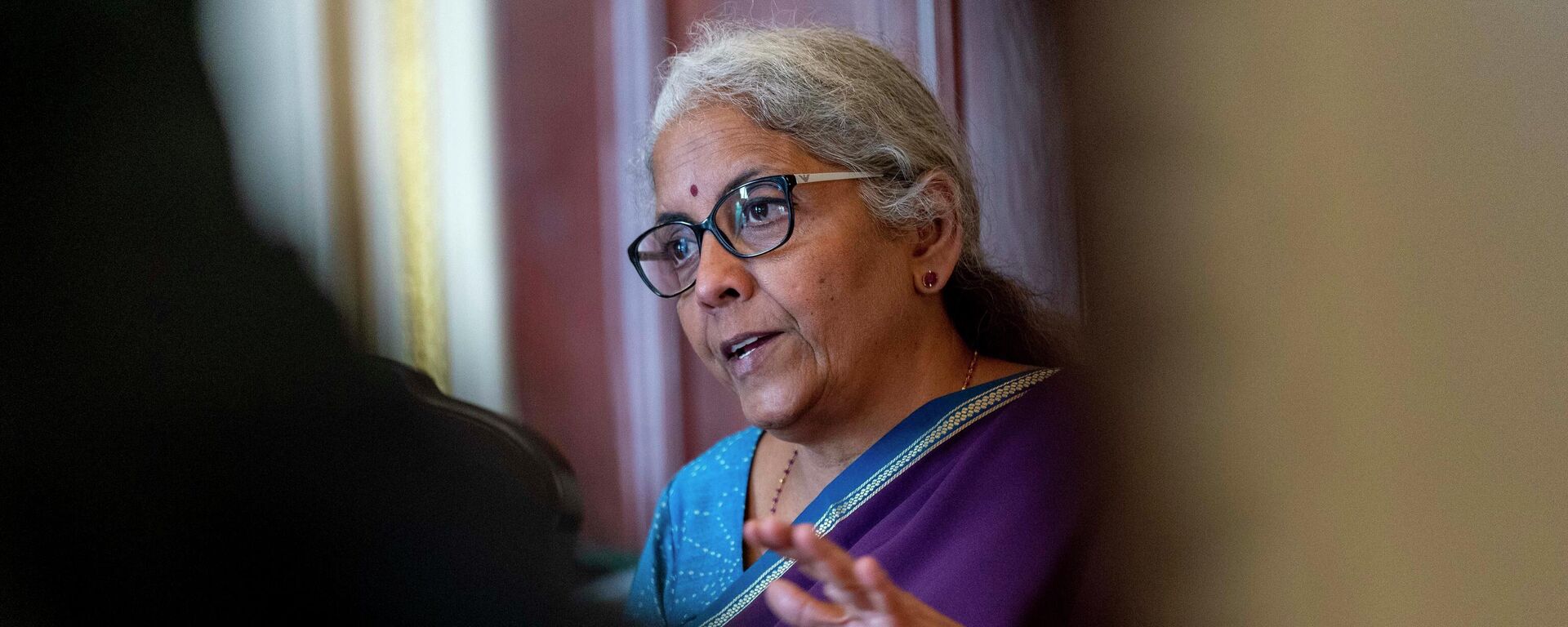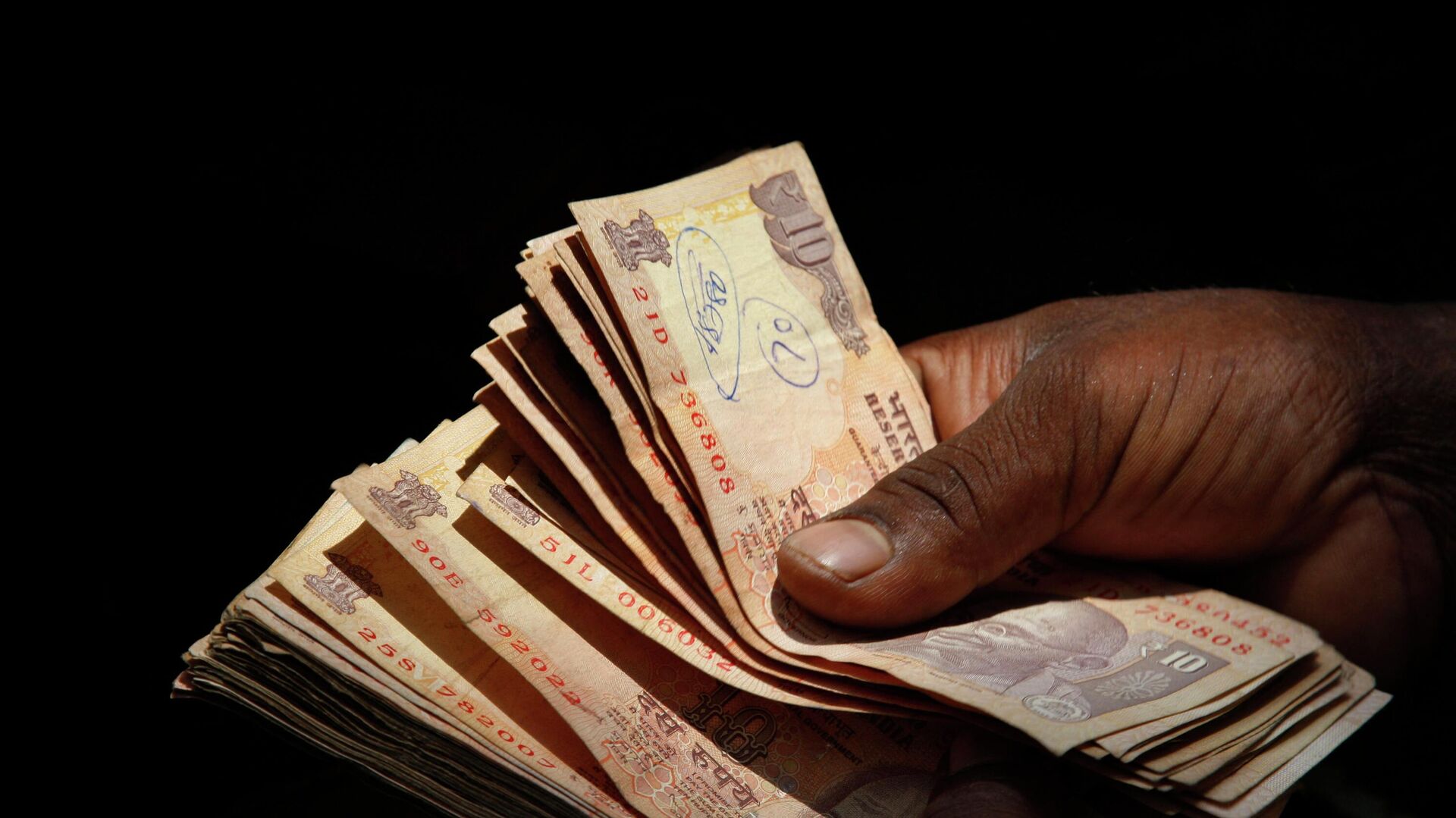https://sputnikglobe.com/20221026/india-set-to-squeeze-us-dominated-financial-systems-including-swift-1102724962.html
India Set to Squeeze US-Dominated Financial Systems Including SWIFT
India Set to Squeeze US-Dominated Financial Systems Including SWIFT
Sputnik International
As India is looking to sign free trade agreements with several countries, New Delhi has placed bets on RuPay and Unified Payments Interface (UPI) to... 26.10.2022, Sputnik International
2022-10-26T20:42+0000
2022-10-26T20:42+0000
2022-12-08T16:29+0000
india
swift
dedollarisation
rupee
russia
us
mastercard
visa
sanctions
narendra modi
https://cdn1.img.sputnikglobe.com/img/07e6/07/07/1097062074_0:50:2983:1727_1920x0_80_0_0_d0d0c5bde0d869f4d665a4e57380d910.jpg
The foray of the National Payments Corporation of India’s (NPCI) - the company that makes the core of India’s digital payments system - into the European market will further reduce the dependency of Indians on the US dollar, experts observed.On October 11, the NIPL, an overseas arm of NPCI, announced its partnership with France-based Worldline to expand the acceptance of UPI and RuPay by merchants in Europe.“Now Indians traveling in Europe can use their UPI and RuPay payment mechanisms for making payments abroad. This will also help in internationalizing Indian currency,” Yogendra Kapoor, a Delhi-based senior economist, told Sputnik. As per the industry estimate, more than 10 million Indians visit Europe annually, a number that could reach 15 million in the next few years.India's merchandise exports to the 27-nation bloc stood at about $65 billion in 2021-22, while imports aggregated to $51.4 billion. Trade in services between the two economies stood at over $31 billion.Kapoor believes that the scope of the partnership between NIPL and Worldline will further expand to goods and services in a "short span of time."In June, India and the 27-nation bloc concluded the first round of talks for a comprehensive free trade agreement, with the aim of concluding the negotiations by 2023-24.With NPIL’s foray into the international market beginning with eight countries accepting it as a payment system and ongoing to talks to include another 30 countries, Jiten Jain, a Delhi-based expert tracking the fintech industry, reckoned that US-dominated card networks and payment systems would face a challenge from RuPay and UPI.“The government of India, in the last five years, has been trying to reduce the dependency on foreign payment networks,” Jain told Sputnik. RuPay card, which is an Indian alternative to Visa and MasterCard, has already seen almost 700 million customers in the domestic market. At the same time, UPI logs 220 million transactions per day.UPI instantly authenticates and authorizes money transfers and facilitates direct bank-to-bank transactions without charging any transaction fee from customers or merchants.Finance minister Nirmala Sitharaman stated that India is working on a system where only a single Know-Your-Customer is needed that can be used across different spheres. The NPCI has turned its focus on cross-border transactions as the next driver of growth in a move that would squeeze the market of Western Union, another US-based firm that currently dominates the remittances market.Indians overseas remitted $87 billion last year, the biggest inflow for any country tracked by the World Bank. As per an industry estimate, a person of any origin has to pay around $13 on average to send $200 across borders.“Overseas Indians can use our rails to remit money inwards straightway into their bank accounts, and for the markets where Indians travel frequently, we will build acceptance for our instruments,” Ritesh Shukla, chief executive officer of NPCI International Payments Ltd, said.NPCI, a specialized division of the Reserve Bank of India, is collaborating with several countries such as the UK, UAE, and Saudi Arabia to build payment ecosystems, including person-to-person, person-to-merchant, and cross-border payments. “Why should one reinvent the wheel? We have done it successfully in India and we want to share it with the world,” Shukla of NIPL said. Alternative to SWIFTExperts believe that slowly but surely, UPI will be able to provide an alternative to US-dominated SWIFT on the global stage. SWIFT— a financial messaging system, faces criticism from various countries, as the West uses it against its rivals to disrupt their international trade and payments. Jain said India has completely eliminated its dependency on foreign cards such as Visa and MasterCard and developed alternatives to US-dominated systems. “We are self-dependent and self-capable. Tomorrow if any of these networks decide to pull off from India, we will have no disruption,” Jain underlined, making an apparent reference to the decision made by US-based firms in response to Moscow’s special military operation in Ukraine. Visa and MasterCard announced their withdrawal from the Russian market in March this year.The Reserve Bank of India recently allowed NPCI to connect UPI, which was only linked via the customer’s savings or current account so far, with credit cards. It allows customers to pay via credit cards by scanning the QR code. Currently, RuPay credit cards enjoy around 20 percent domestic market share, with global networks like Visa and Mastercard dominating the rest. “Decision to take RuPay and UPI global, especially the countries like Singapore, UAE, and other Asian countries, might be just the beginning of a big revolution to come, and very soon these both Indian titans like UPI and Rupay will be dominating the global fintech industry,” Jain concluded.
https://sputnikglobe.com/20221012/uae-singapore-working-to-make-indias-rupay-acceptable-in-their-countries-finance-minister-says-1101746153.html
russia
Sputnik International
feedback@sputniknews.com
+74956456601
MIA „Rossiya Segodnya“
2022
Rishikesh Kumar
https://cdn1.img.sputnikglobe.com/img/07e4/08/04/1080055820_0:0:388:389_100x100_80_0_0_40018ee210946d65d49ffba4f4c008e1.jpg
Rishikesh Kumar
https://cdn1.img.sputnikglobe.com/img/07e4/08/04/1080055820_0:0:388:389_100x100_80_0_0_40018ee210946d65d49ffba4f4c008e1.jpg
News
en_EN
Sputnik International
feedback@sputniknews.com
+74956456601
MIA „Rossiya Segodnya“
Sputnik International
feedback@sputniknews.com
+74956456601
MIA „Rossiya Segodnya“
Rishikesh Kumar
https://cdn1.img.sputnikglobe.com/img/07e4/08/04/1080055820_0:0:388:389_100x100_80_0_0_40018ee210946d65d49ffba4f4c008e1.jpg
india, swift, dedollarisation, rupee, russia, us, mastercard, visa, sanctions, narendra modi, reserve bank of india
india, swift, dedollarisation, rupee, russia, us, mastercard, visa, sanctions, narendra modi, reserve bank of india
India Set to Squeeze US-Dominated Financial Systems Including SWIFT
20:42 GMT 26.10.2022 (Updated: 16:29 GMT 08.12.2022) As India is looking to sign free trade agreements with several countries, New Delhi has placed bets on RuPay and Unified Payments Interface (UPI) to internationalize the national currency, the rupee. These two payment systems have figured into every trade discussion in recent months.
The foray of the National Payments Corporation of India’s (NPCI) - the company that makes the core of India’s digital payments system - into the European market will further reduce the dependency of Indians on the US dollar, experts observed.
On October 11, the NIPL, an overseas arm of NPCI, announced its partnership with France-based Worldline to expand the acceptance of UPI and RuPay by merchants in Europe.
“Now Indians traveling in Europe can use their UPI and RuPay payment mechanisms for making payments abroad. This will also help in internationalizing Indian currency,” Yogendra Kapoor, a Delhi-based senior economist, told Sputnik.
As per the industry estimate, more than 10 million Indians visit Europe annually, a number that could reach 15 million in the next few years.
India's merchandise exports to the 27-nation bloc stood at about $65 billion in 2021-22, while imports aggregated to $51.4 billion. Trade in services between the two economies stood at over $31 billion.
Kapoor believes that the scope of the partnership between NIPL and Worldline will further expand to goods and services in a "short span of time."
In June, India and the 27-nation bloc concluded the first round of talks for a comprehensive free trade agreement, with the aim of concluding the negotiations by 2023-24.

12 October 2022, 08:12 GMT
With
NPIL’s foray into the international market beginning with eight countries accepting it as a payment system and ongoing to talks to include another 30 countries, Jiten Jain, a Delhi-based expert tracking the fintech industry, reckoned that US-dominated card networks and payment systems would face a challenge from RuPay and UPI.
“The government of India, in the last five years, has been trying to reduce the dependency on foreign payment networks,” Jain told Sputnik.
RuPay card, which is an Indian alternative to Visa and MasterCard, has already seen almost 700 million customers in the domestic market. At the same time, UPI logs 220 million transactions per day.
UPI instantly authenticates and authorizes money transfers and facilitates direct bank-to-bank transactions without charging any transaction fee from customers or merchants.
Finance minister Nirmala Sitharaman stated that India is working on a system where only a single Know-Your-Customer is needed that can be used across different spheres.
“UPI target is to cross 1 billion transactions per day in the next 5 years,” she noted.
The NPCI has turned its focus on
cross-border transactions as the next driver of growth in a move that would squeeze the market of Western Union, another US-based firm that currently dominates the remittances market.
Indians overseas remitted $87 billion last year, the biggest inflow for any country tracked by the World Bank. As per an industry estimate, a person of any origin has to pay around $13 on average to send $200 across borders.
“Overseas Indians can use our rails to remit money inwards straightway into their bank accounts, and for the markets where Indians travel frequently, we will build acceptance for our instruments,” Ritesh Shukla, chief executive officer of NPCI International Payments Ltd, said.
NPCI, a specialized division of the Reserve Bank of India, is collaborating with several countries such as the UK, UAE, and Saudi Arabia to build payment ecosystems, including person-to-person, person-to-merchant, and cross-border payments.
“Why should one reinvent the wheel? We have done it successfully in India and we want to share it with the world,” Shukla of NIPL said.
Experts believe that slowly but surely, UPI will be able to provide an alternative to US-dominated SWIFT on the global stage.
SWIFT— a financial messaging system,
faces criticism from various countries, as the West uses it against its rivals to disrupt their international trade and payments.
Jain said India has completely eliminated its dependency on foreign cards such as Visa and MasterCard and developed alternatives to US-dominated systems.
“We are self-dependent and self-capable. Tomorrow if any of these networks decide to pull off from India, we will have no disruption,” Jain underlined, making an apparent reference to the decision made by US-based firms in response to Moscow’s special military operation in Ukraine.
Visa and MasterCard announced their withdrawal from the Russian market in March this year.
The Reserve Bank of India recently allowed NPCI to connect UPI, which was only linked via the customer’s savings or current account so far, with credit cards. It allows customers to pay via credit cards by scanning the QR code.
Currently, RuPay credit cards enjoy around 20 percent domestic market share, with global networks like Visa and Mastercard dominating the rest.
“Decision to take RuPay and UPI global, especially the countries like Singapore, UAE, and other Asian countries, might be just the beginning of a big revolution to come, and very soon these both Indian titans like UPI and Rupay will be dominating the global fintech industry,” Jain concluded.



